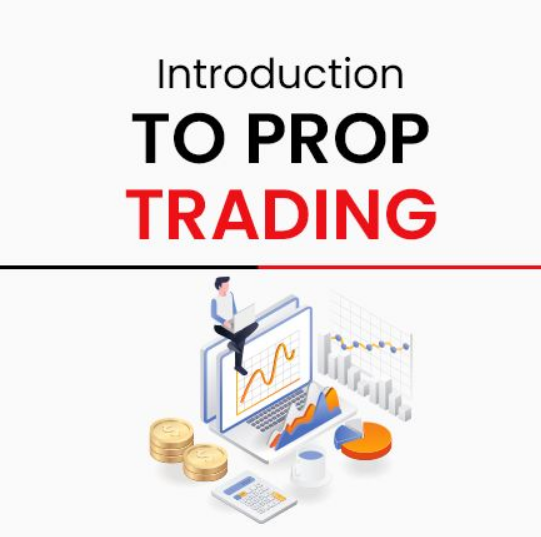Beginner’s Guide to Prop Trading: Expert Strategies
Welcome to our comprehensive beginner’s guide to prop trading. In today’s competitive trading landscape, understanding the intricate details of proprietary trading—prop trading—is imperative. This in-depth article is designed for traders, quants, risk managers, and decision-makers looking to gain actionable insights into advanced backtesting, sophisticated risk management, and effective utilization of industry-leading tools.
Understanding Prop Trading and Its Opportunities
Prop trading involves a firm using its own capital to trade financial instruments, as opposed to trading on behalf of clients. The benefits include access to substantial capital, advanced risk management systems, and exposure to various market opportunities. Whether you are a junior trader or a senior quant, understanding how prop trading environments operate can open doors to systematic growth and innovation in trading strategies.
This guide delves into the advanced topics that set apart seasoned prop trading experts from beginners. We discuss actionable techniques such as automated backtesting, effective risk management parameters, and the use of specific trading platforms tailored for proprietary environments.
![]()
Explore our expert prop trading insights on Facebook
Mastering Advanced Backtesting in Prop Trading
Backtesting is a critical component for any prop trading strategy. By simulating historical market conditions, traders verify the robustness of their trading strategies. However, traders must be wary of pitfalls such as overfitting, survivorship bias, and data snooping. A robust backtesting setup typically incorporates:
- Advanced Parameter Optimization: Automated tuning procedures to assess optimal settings.
- Walk-Forward Analysis: Testing strategies on sequential data segments to mimic live market conditions.
- Out-of-Sample Testing: Ensuring that strategies perform well on unseen data.
For prop trading firms, integrating backtesting results with forward testing (or paper trading) is essential. Monitoring key metrics like Sharpe ratios, maximum drawdown, and profit factors help in evaluating performance. Consider the following sample Python snippet using Backtrader to automate backtesting:
import backtrader as bt
class TestStrategy(bt.Strategy):
def __init__(self):
self.sma = bt.indicators.SimpleMovingAverage(self.data.close, period=15)
def next(self):
if self.data.close[0] > self.sma[0]:
self.buy()
elif self.data.close[0] < self.sma[0]:
self.sell()
cerebro = bt.Cerebro()
cerebro.addstrategy(TestStrategy)
# Load data and set commission/slippage here as needed
cerebro.run()
cerebro.plot()
Comparing Top Automated Backtesting Tools for Prop Trading
Choosing the right backtesting tool is crucial. Here is a detailed comparison of several widely recognized platforms:
| Tool | Backtesting Features | Data Quality & Availability | Integration Capabilities | Pricing | Use Case |
|---|---|---|---|---|---|
| TradingView | Event-driven, vectorized; handles slippage and commissions | Deep historical data across asset classes, real-time feeds | API access, broker integration, compatible with add-ons | Free tier available; premium options from ~$14/month | Suitable for both retail traders and small prop trading teams |
| NinjaTrader | Robust simulation and walk-forward analysis | Extensive historical data; supports multiple asset classes | Broker integration, third-party plugins | Free for simulation; licensing for live trading | Ideal for prop firms requiring scalable solutions |
| Backtrader | Python-coded, full automation, supports stress testing and optimization | Depends on data provider; open source flexibility | Easily integrates with Interactive Brokers and other APIs | Free and open source | Best for quants and firms with in-house Python capabilities |
These tools not only provide automated parameter optimization and detailed performance reports but also offer integrated risk management features and compliance tools ideal for a prop trading environment.
Advanced Techniques: Walk-Forward and Out-of-Sample Testing
When implementing backtesting, many traders use walk-forward optimization to ensure that their strategies remain robust over time. This approach involves splitting data into segments, optimizing parameters on one segment, and validating them on subsequent segments. This technique reduces the risk of overfitting by verifying the robustness of strategies in different market scenarios.
Out-of-sample testing further isolates parts of your data from the training process, ensuring that your strategy's effectiveness isn’t just limited to historical quirks. For prop firms and institutional traders, combining these practices with real-time paper trading is vital, ensuring that the strategy transitions smoothly from simulation to live environments.
![]()
Follow us on Facebook for more prop trading insights
Real-World Case Studies and Practical Applications
Case studies are invaluable for understanding how various trading strategies perform under real-market conditions. Consider a mid-sized prop firm experimenting with algorithmic strategies on Forex and equities. One challenge they faced was optimizing strategies for volatile periods without succumbing to overfitting. By employing a combination of walk-forward analysis and out-of-sample testing using NinjaTrader, the team improved their strategy's Sharpe ratio from 0.8 to 1.2 and reduced maximum drawdown by 15%.
Another example involves a firm using Backtrader. Their quants were experimenting with multiple parameter sets to handle slippage more effectively. With automated parameter optimization, they shortened iteration times and increased the reliability of backtesting reports. These tangible improvements directly translated to better risk management and enhanced profit factors.
Key Risk Management Strategies in Prop Trading
Risk management is crucial for prop trading, where using firm capital demands rigorous oversight. Effective risk strategies include:
- Dynamic Position Sizing: Adjust trade sizes based on volatility and recent performance.
- Stop-Loss Mechanisms: Pre-set triggers to cap losses and minimize drawdowns.
- Regular Risk Reviews: Implement backtesting reports to refine risk parameters continuously.
By integrating these measures with advanced backtesting tools, traders can track performance metrics like alpha, beta, Sharpe ratio, and maximum drawdown more accurately. For deeper insights, explore our advanced prop trading strategies guide and our risk management best practices page.
Regulatory Considerations and Compliance
Prop trading firms must adhere to a variety of regulations. For example, guidelines from MiFID II and ESMA in Europe, as well as NFA rules in the US, require strict risk controls and transparent reporting. Ensuring that backtesting tools integrate compliance dashboards and automated reporting features can help firms stay abreast of regulatory changes and meet compliance metrics.
Pro Tips and Expert Guidance
Conclusion and Next Steps
Our beginner's guide to prop trading has outlined how advanced backtesting, effective use of trading tools, and rigorous risk management can empower traders at every level. The integration of tools like TradingView, NinjaTrader, and Backtrader provides both cost-effective and robust solutions for your trading infrastructure.
We encourage you to test these strategies, refine your approach with real case studies, and ensure that you comply with industry regulations. For a more comprehensive set of resources, download our Risk Management Checklist that details best practices and key performance indicators, including metrics such as Sharpe ratios and maximum drawdown limits.
As the prop trading landscape evolves rapidly in 2025, staying informed with advanced, practical insights is essential. Subscribe to our newsletter for timely updates, join our upcoming webinar on next-generation trading strategies, and explore our internal resources to stay ahead. Your journey to mastering prop trading starts now!






